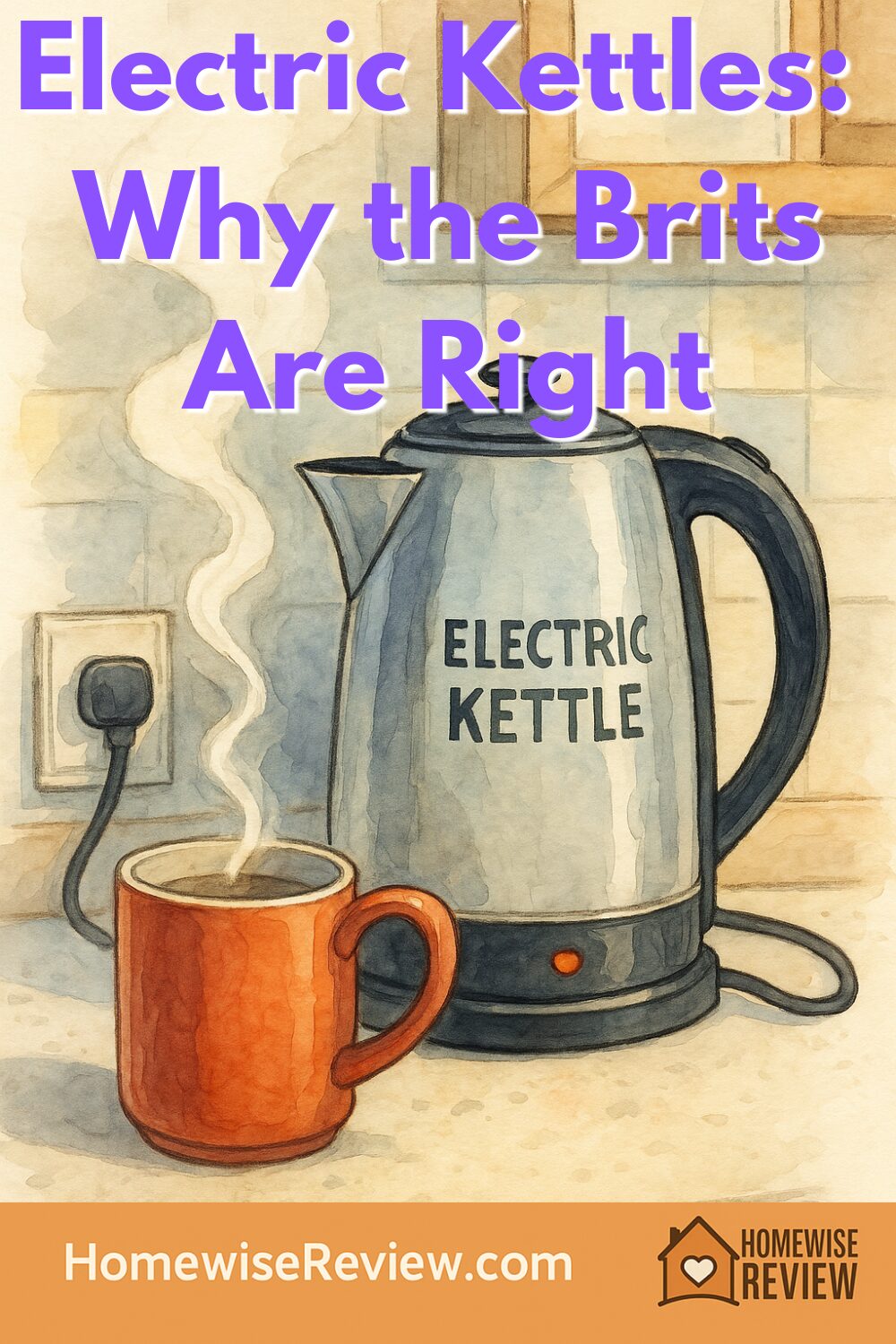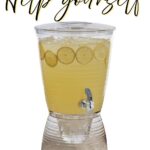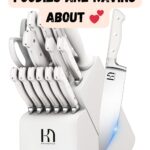
Electric kettles are faster, safer, and more efficient than boiling on the stove or microwaving a mug. With one button you get rolling-hot water for tea, coffee, pasta cups, bottles, oatmeal, and soup packets — and most models shut off automatically so you don’t scorch a pan. Short version: once you live with an electric kettle, you won’t go back.
We may earn a small referral fee at no extra cost to you.
Why electric kettles win (in plain English)
- Speed
US kettles are typically 1,500 W and bring 1 liter to a boil in about 3–5 minutes. UK kettles run up to 3,000 W on 230–240 V mains, so they’re even quicker — hence the national obsession. - Energy sense
You heat only the water you need, inside a well-insulated chamber. Quick math: 1,500 W × 3 minutes ≈ 0.075 kWh. At $0.15/kWh, that’s about a penny per boil. - Temperature control
Green tea at 175°F, pour-over at 200°F, baby bottles at warm — good kettles hit precise temps, not just “scalding.” - Safety and shut-off
Auto cut-off when boiling or when empty. No open flame. No forgotten pot turning into a scorched mess. - Everyday convenience
Faster breakfasts, quicker cup noodles, speedier French press or AeroPress, instant oatmeal, and easy cleaning vs a limescale-crusted saucepan.
Quick picks (3 winners)
- Overall: Cuisinart CPK-17 PerfecTemp 1.7 L — dependable variable temps, large capacity, easy interface.
- Budget: Hamilton Beach 1.7 L Glass Kettle — fast boil, clear water window, auto shut-off for less.
- Upgrade/Pour-Over: Fellow Stagg EKG 0.9 L — precise temps and gooseneck control for coffee and delicate teas.
Comparison table
| Kettle | Capacity | Power & Temps | Why choose it |
|---|---|---|---|
| Cuisinart CPK-17 PerfecTemp | 1.7 L | ~1500 W, 6 presets + keep-warm | Family-size, reliable, great all-rounder |
| Hamilton Beach Glass 1.7 L | 1.7 L | ~1500 W, single boil + auto off | Affordable, fast, easy to see water level |
| Fellow Stagg EKG | 0.9 L | ~1200 W, dial-set 135–212°F + hold | Precision for pour-over and premium tea |
We may earn a small referral fee at no extra cost to you.
Deep dives
Cuisinart CPK-17 PerfecTemp — Overall winner
What it is
A 1.7-liter stainless kettle with six temperature presets (160–212°F), 30-minute keep-warm, and a real-time temp readout.
Why it’s great
- Family-friendly capacity for multiple mugs or a full French press.
- Proper presets for green/white/oolong/coffee/boil.
- Keep-warm prevents reboils while you’re busy.
Keep in mind
- Larger footprint than minimalist options.
Best for
Homes that want one kettle for tea, coffee, and general cooking tasks.
Hamilton Beach 1.7 L Glass — Best budget
What it is
A clear, cordless 1.7-liter glass kettle with blue boil light, boil-dry protection, and automatic shut-off.
Why it’s great
- Fast Boil on a budget and easy water-level visibility.
- Wide lid for quick filling and cleaning.
Keep in mind
- No variable temperatures; it’s a straight-to-boil workhorse.
Best for
Busy kitchens that just need safe, quick boiling without the extras.
Fellow Stagg EKG — Upgrade for coffee & tea geeks
What it is
A precision gooseneck kettle with a PID controller, dial-set temps from 135–212°F, 60-minute hold, and great balance for slow pours.
Why it’s great
- Pinpoint water temp for pour-over and delicate teas.
- Gooseneck spout gives steady, accurate flow.
Keep in mind
- Smaller 0.9-liter capacity; more refills for big households.
Best for
Coffee lovers and tea perfectionists who value control and design.
What to look for (buying guide)
- Wattage & speed: 1,200–1,500 W in the US is standard; higher wattage means faster boils.
- Capacity: Solo/duo households do fine with 0.8–1.0 L; families like 1.5–1.7 L.
- Temperature presets: Must-have for green/white tea and pour-over coffee.
- Keep-warm: 20–60 minutes saves repeat boils during breakfast.
- Noise & feel: Quiet lids, smooth button action, balanced handle.
- Safety: Auto shut-off, boil-dry protection, cool-touch or insulated walls.
- Cleaning: Wide lid opening; limescale wipes away with a little vinegar soak.
- Counter space: A tidy base and cord wrap make a big difference.
Real-world tips
- Descale monthly if you have hard water: boil 1 cup vinegar + 3 cups water, soak 10–15 minutes, rinse twice.
- Only heat what you need for speed and savings.
- For baby bottles, heat to just-warm water using a temp-control kettle, not a rolling boil.
- For coffee, aim around 200°F; for green tea, 170–180°F; for black tea, 205–212°F.
Final thoughts
Electric kettles are one of those small upgrades that change daily life — faster mornings, better tea and coffee, and fewer kitchen mishaps. The Brits aren’t just being fussy; they’re being practical. Pick a solid all-rounder like Cuisinart CPK-17, save with Hamilton Beach Glass, or go precision with Fellow Stagg EKG and you’ll wonder how you managed without one.
We may earn a small referral fee at no extra cost to you.
FAQ
Why do electric kettles seem faster in the UK?
Higher mains voltage (230–240 V) allows 3,000 W kettles, which boil quicker than typical US 1,500 W models.
Are they really cheaper to run than the stove?
Usually yes, because you heat a small, enclosed volume directly and shut off automatically at boil. See the example above — roughly a penny per liter boil at common US rates.
Glass, stainless, or plastic — which is best?
Stainless is durable and hides limescale. Glass lets you see the water and looks great. BPA-free plastic often has better insulation and a cool touch. Performance is similar; pick based on feel and cleaning preference.
Do I need variable temperature?
If you drink green/white tea or make pour-over coffee, yes. If you just want boiling water for black tea, cocoa, and noodles, a single-temp kettle is fine.
What’s “keep-warm” good for?
It holds your set temperature for 20–60 minutes — handy for multiple cups or timing a pour-over after breakfast chaos.
How do I prevent limescale?
Use filtered water if you can, empty the kettle after use, and descale monthly. A quick wipe after a vinegar soak keeps it spotless.




